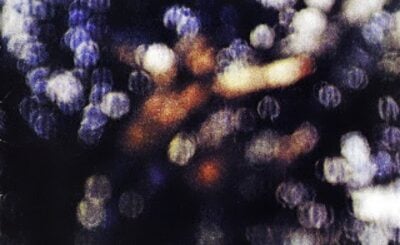Syd Barrett: The Man Beyond the Myth, with his Sister Rosemary

The Fingal’s Cave Podcast recently granted us a rare and intimate glimpse into the life of the enigmatic Syd Barrett through a personal interview with his sister, Rosemary Breen. The hour-long session delved into a multitude of topics, unravelling some of the mystery that has long shrouded her brother. Its a great interview about Syd Barrett and his story and not to be missed.
Syd Barrett the Artist
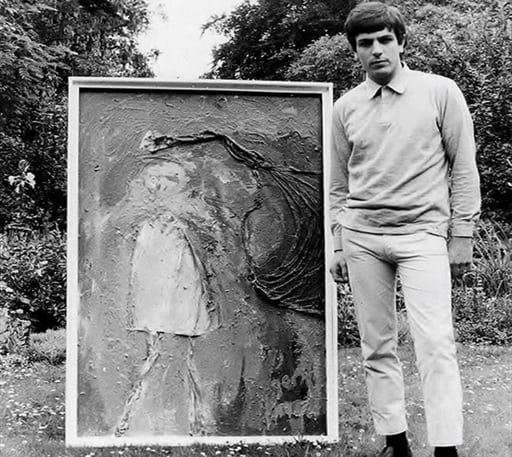
Rosemary painted a picture of Syd not as the quintessential rock star many might assume, but as an artist at his core. “Music was a hobby, the art was him,” she explained, driving home the point that for Barrett, celebrity was an alien concept, something he neither sought after nor understood. Rosemary suggested, “He never wanted celebrity, he didn’t understand it”.
Syd’s interactions with music and sound were personal explorations of art, not attempts to top the charts or bask in the adulation of fans. This stance led Rosemary to reflect on the perils of fame, saying, “Celebrity is such a dangerous thing.”
Syd was interested in music on a personal level rather than using it to achieve fame like other aspirational pop stars. “He could play with the sound system and do this and do that, [] it was nothing to do, ever, with the audience or wanting to get to number one, or whatever, it was never that, and he never wanted that and he never understood anybody that would want that”.
Explore > Syd Barrett Paintings, Artwork and Letters
Music Was A Harmful Distraction
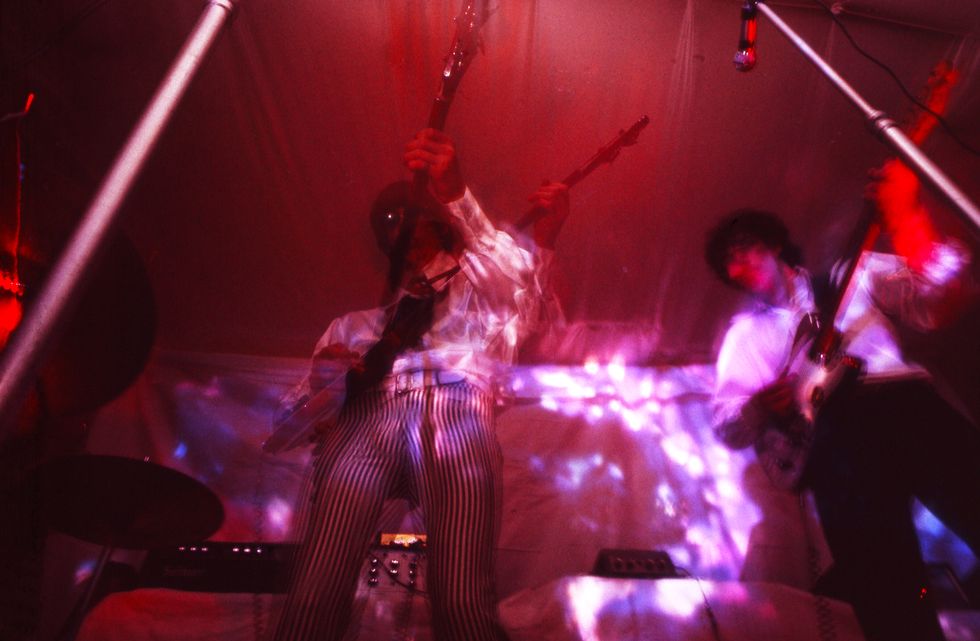
Syd Barrett’s life took a series of unexpected turns when he chose to dabble in music, a move that his sister regards as a detour from his true passion—painting. According to Rosemary, Syd originally joined Roger Waters and the others in Pink Floyd for a bit of fun and intended to return to Camberwell College. “He thought it would be fun with Roger Waters and the others just to have a bit of fun, he did intend to go back [to Camberwell college] and it would have been wonderful” adding “He was damaged before he could go back to who he was”. Instead, he was swept away by a tide of pop stardom and drug use that his sister believes ultimately sidelined him from his artistic journey. “Getting involved with music was really a mistake to my mind and probably to his actually because it side-tracked him from his love which was painting”
The Counterculture and Its Consequences
The narrative of Syd Barrett is entangled with the broader tapestry of the 1960s counterculture—a time when drug use was rampant in the London underground music scene, fostering creativity yet often at a high personal cost. Artists like Barrett used drugs as a conduit for creative expression, but the line between inspiration and detriment was perilously thin.
Syd’s Bankruptcy and the Return to Cambridge
In the ’80s, after a ten-year stint at Chelsea Cloisters that ended when the royalties dried up and bankruptcy loomed, Syd returned to the family fold in Cambridge. There, he reclaimed some semblance of peace, immersing himself in art when the mood struck, gardening, and occasionally driving to the seaside with his sister. “It wasn’t easy,” Rosemary shared, “but because we were so close initially, I could find him again.”
In a poignant culmination of his struggles, Syd Barrett walked from Chelsea Cloisters back to his Cambridge roots in 1982. This walk symbolised a final departure from the fame and frenzy of the music world—a return to a life away from the spotlight. Barrett’s subsequent life in Cambridge until his passing in 2006 was marked by simplicity and a reconnection with himself, away from the persona of “Syd Barrett” that the world wouldn’t let him forget.

“When he came back in the 80s he moved in with my mother in St Margaret Square and he stayed there until he died”. However, Syd was not himself and had changed. “He got really difficult one night after about 18 months or so and so she moved in with me with us and he had the house to himself which was best”. Syd needed space to sort his thoughts and come to terms with the damage caused to his brain, probably from the drugs, possibly also due to underlying mental illness. “There was a lot going on in his head and it was better that he sorted it out himself. [] He was doing some art which I’ve got quite a lot of it then it was very nice, very good”
Difficulty with Communication
Communication became a challenge for Syd as he coped with the aftermath of “many bad trips.” Rosemary’s recounting of his preference to be considered someone else, denying his past as Pink Floyd’s luminary, sheds light on his coping mechanisms. His retreat into art was deeply personal—a therapeutic endeavour that he did not expect others to find interesting or engaging.
“He was in Chelsea Cloisters for about ten years, and he ran out of money I don’t know what happened, they tell me that in the group that he had got lots of money, but he used to get royalties from the office and, apparently for some reason he told me that they said there isn’t ant more money so he had to leave Chelsea Cloisters because he wasn’t paying the rent and he came home and they my brother, my eldest brother sorted out his tax affairs and everything he was made bankrupt and everything it worked out like that”
Syd Barrett Paintings
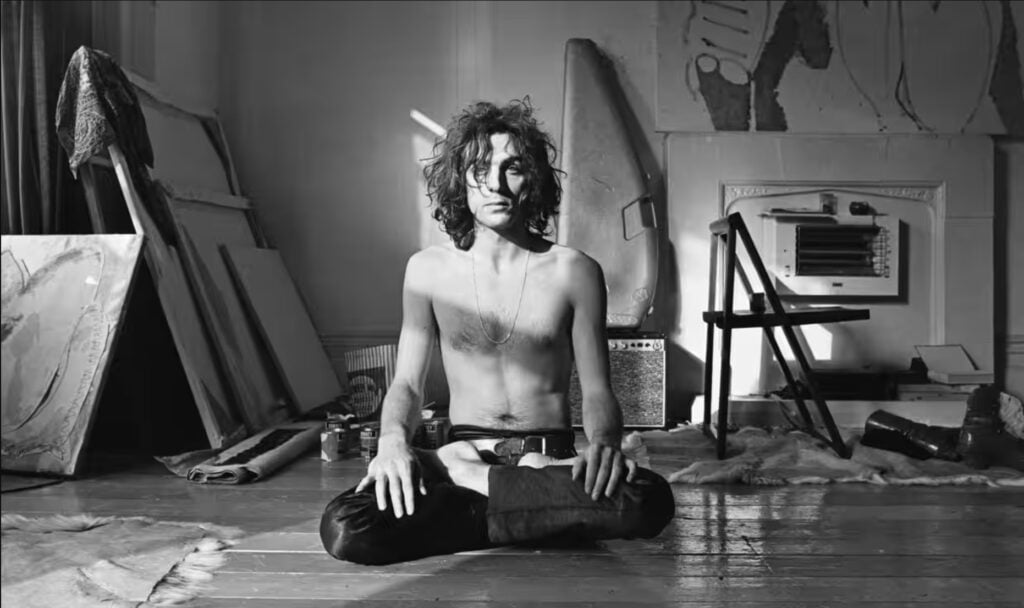
Syd had a creative energy inside him, an inquisitiveness and playful nature. His art was primarily for himself rather than seeking approval from others. “Him making art was a personal, personal thing, and it was nothing to do with anybody or anything else, and it wasn’t very interesting to anybody, he didn’t think it would be interesting to anybody else, but he needed to do it”
Syd painted lots of paintings, with many destroyed shortly after, but many remain. Rosemary saw one towards the end of his time with Pink Floyd that possibly summed up his frustration with all the fame and confusion. “I remembered one when he was in the group but not happy towards the end and he’d done this enormous canvass at my mothers at Hills Road and it was all black and there was one little tiny inch by inch bit of colour on the bottom right hand corner”. Asked if that was Syd, Rosemary said, “I don’t know, that’s what he did”.
Syd used to set fire to his paintings in the back garden. Perhaps he didn’t think much of them and was getting rid of rubbish as he didn’t like the visual clutter around him. “I suppose they didn’t matter much to him once he got it out of him”.
Syd’s lyrics were very playful, particularly in his solo material. If anyone was to take the lyrics too seriously and not see them as a joke, Syd would be quite amused. Art was his real expression of himself. “He was playing with lyrics but he was an artist and he was putting himself onto the canvas, very different”
A Curious Mind, The Artist Within
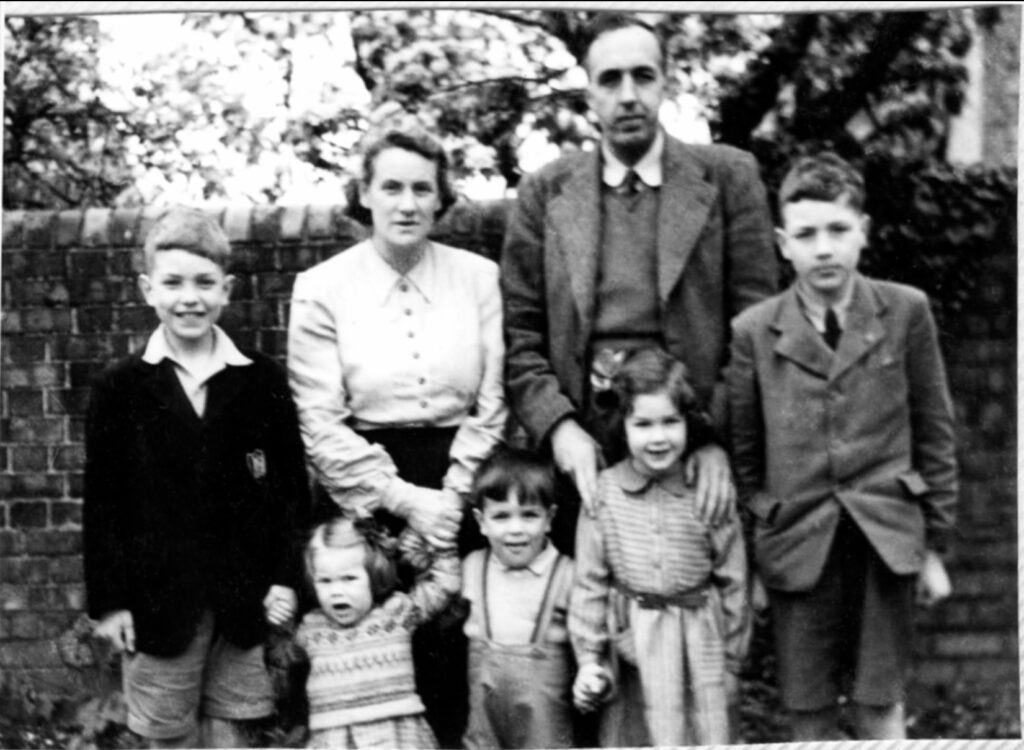
For Syd, taking things apart and reassembling them was a reflection of his intrinsic curiosity—an allegory for his approach to life and art. Such activities can offer solace and a sense of control, perhaps a method for Syd to find order amidst chaos. Those who suffer the negative symptoms of ADHD and autism will often find comfort in things that distract us, like painting, taking things apart, seeing how things work. Or spending an extraordinary amount of time making Pink Floyd fan sites! “Really what now would be ADHD I suppose in that he was always running about and always much more active than the rest of us so i’m sure he would have been given loads of labels”.
Roger Keith ‘Syd’ Barrett of course had a curious and inquisitive mind. This was reflected in his playful lyrics, his artwork and his taking things apart. “I think there’s a lot of… my father was a brilliant scientist and I think there was a lot of that though to be a successful scientist you’ve got to see out of the norm haven’t you, you’ve got to imagine something that nobody’s imagined before and work it round and he had that in his head, I think he had that type of brain.”
Syd Barrett and his Struggles in Later Life
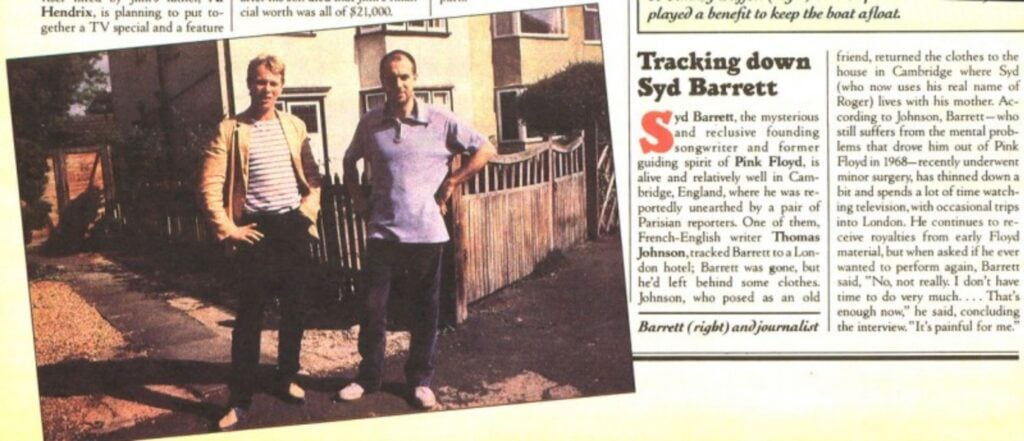
Syd spent considerable time alone in later life and only saw his sister Rosemary regularly. “He was painting when he was in a good frame of mind and when he wasn’t he was just sitting quietly, spent a lot of time doing that, he did a bit of gardening, we used to go out about in the car the two of us and went to the seaside and went round and about. It wasn’t easy but because we were so close initially, I could find him again”
Having lived a reclusive life for so long it becomes difficult to hold conversations. Rosemary said, “[Syd] found communication quite difficult because of his brain damage really… he found chatting… and the less you chat the more difficult it is”
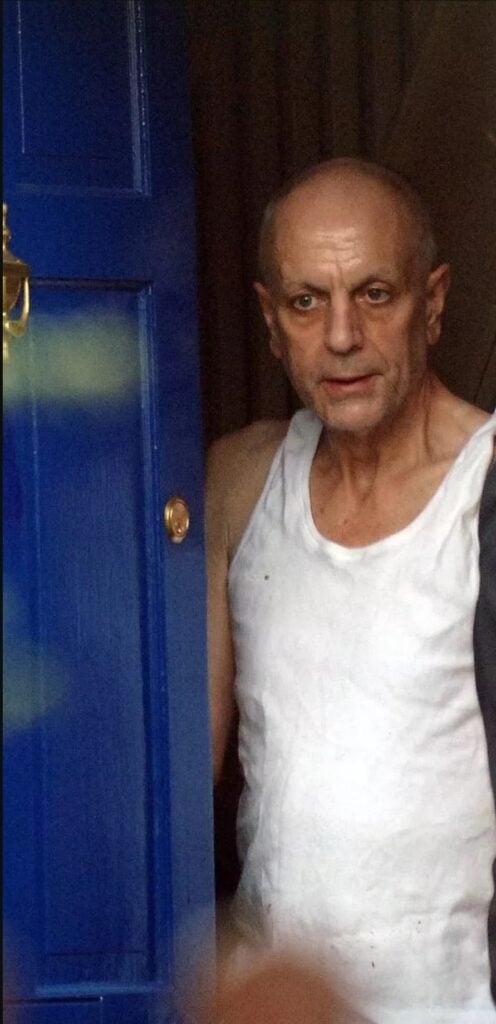
Syd found it incredibly difficult to look back at his previous self, the person taking a lot of drugs and spending time with people who probably didn’t have his best interests at heart. Rosemary said, “He didn’t share with me any of the looking back really, he didn’t want to know, he denied it really didn’t like, if somebody of these many fans bless them came to the door you know he said you know Syd doesn’t live here anymore because he didn’t. He worked it out like that I’m not him I don’t… i’m somebody else.”
“He had so many bad trips really that it was the only way to cope, just shut them out which must have been incredibly difficult, but I think you have to when you’ve been damaged like that, I think he was very, very miserable”
On the rumour that Rosemary and Syd watched the Crazy Diamond biography together, Rosemary said, “No, he wouldn’t do that no”. It has been reported in many books and articles that this took place, but it didn’t. Rosemary did reflect on her watching the new Have You Got It Yet film though. “I felt [the film] was very sad but it was very realistic, very well done”
Reflecting on Syd Barrett’s Legacy
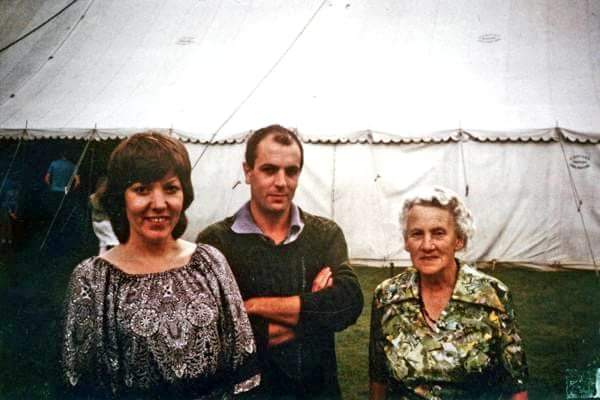
As the story of Syd Barrett unfolds through his sister’s words, we’re left with a narrative far richer and more complex than that of a mere rock star undone by fame. Instead, we see a man of profound artistic spirit, for whom music was just one medium of expression—a man who struggled with the trappings of fame and the toll of substance abuse.
The Fingal’s Cave Podcast has indeed peeled back a layer of the Barrett mythology, allowing us to see the person behind the persona, a person who longed, not for the adoration of millions, but for the simple joys of art and the familiar comforts of home.
As Rosemary Breen so candidly shared her memories and insights, we’re reminded of the fragility of artists like Syd Barrett—whose brilliance shone brightly but burned out far too quickly, leaving us to ponder the delicate balance between creativity and the vulnerabilities that often accompany it.
Remembering Roger Keith Barrett
Rosemary’s reflections bring humanity to the legend that is Syd Barrett. We’re reminded of a vibrant, sparkly boy who lost his way—a cautionary tale she wishes would resonate with the youth who idolise him. “If you sum things up, sum his life up, then an amazingly attractive energetic sparkly boy goes the wrong way is how I see it, goes the wrong way in life and is lost, and wouldn’t it be nice if some youngsters who look up to him would think about it, just think why did it happen and I don’t want to go that way”
Rosemary reflected on the closeness between her and her brother towards the end of his life. “When he was in hospital it was the only time he asked me to kiss him, only time really”. Syd Barrett sadly died on 7th July 2006 at age 60. He had pancreatic cancer.
David Gilmour said at the time, “Do find time to play some of Syd’s songs and to remember him as the madcap genius who made us all smile with his wonderfully eccentric songs about bikes, gnomes, and scarecrows. His career was painfully short, yet he touched more people than he could ever know.
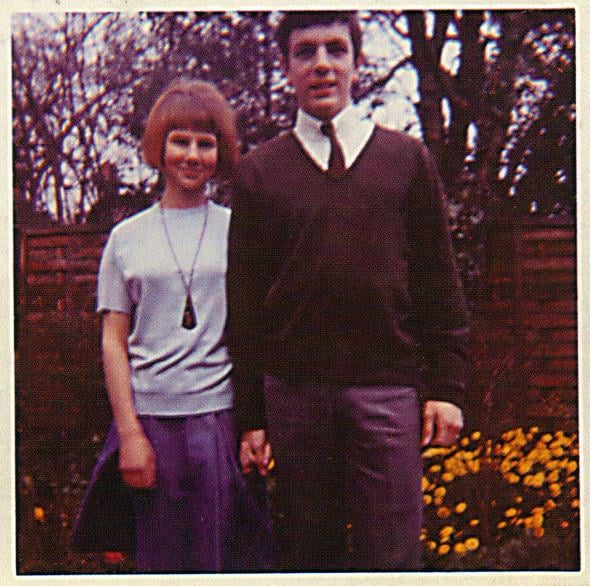

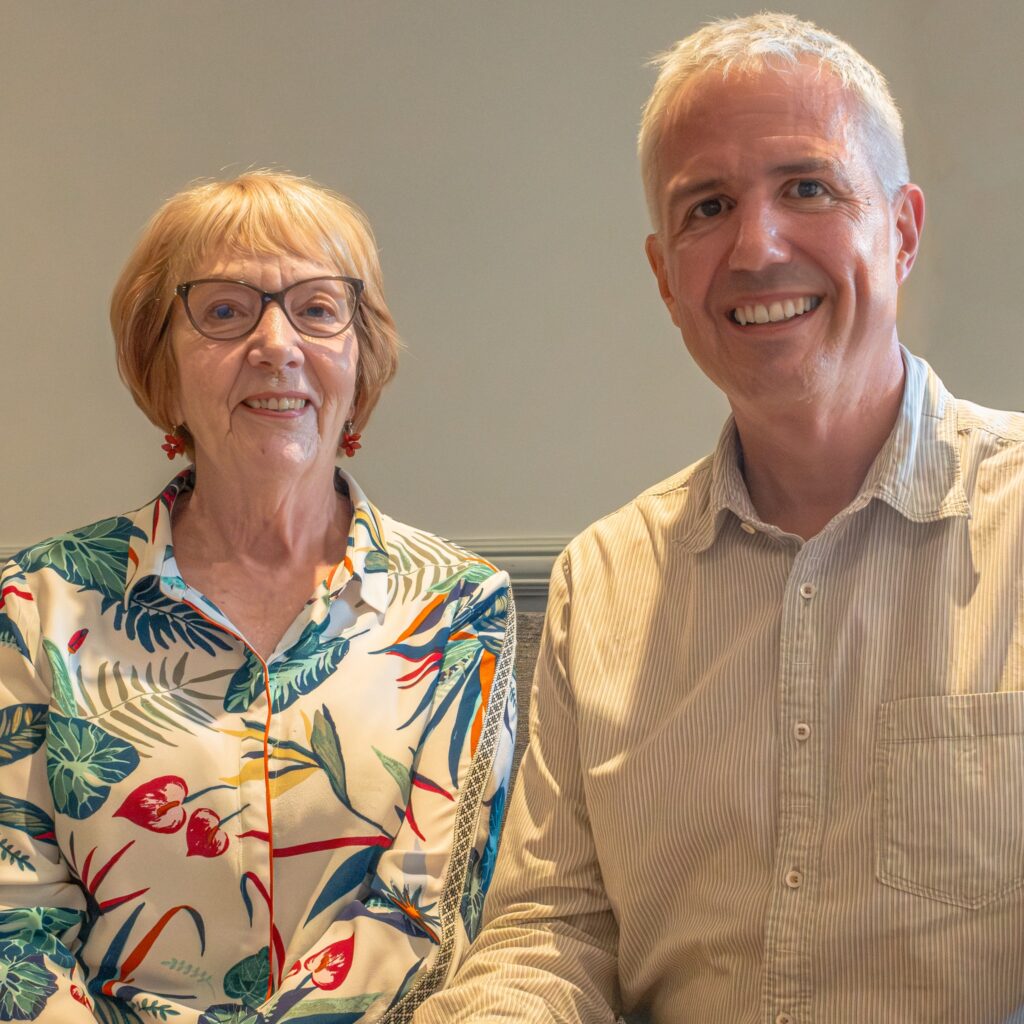
Links
- Fingal’s Cave Podcast on YouTube or Fingal’s Cave Website
- Syd Barrett Photos
- The Madcap Next Door – What Living Next Door to Syd Barrett Was Like
- Before They Were Pink Floyd – A History of the Band Pre Floyd
Syd Barrett Timeline
- 1946: Born in Cambridge, England.
- Early 1960s: Barrett starts playing music in local bands in Cambridge.
- 1965: Co-founds Pink Floyd, originally named “The Pink Floyd Sound,” with fellow Cambridge musicians.
- 1967: Pink Floyd releases their debut album, “The Piper at the Gates of Dawn,” primarily written by Barrett. The album becomes a critical and commercial success.
- 1968: Barrett’s mental health begins to deteriorate, possibly exacerbated by heavy LSD use. He becomes increasingly erratic, leading to David Gilmour being brought in to cover for him.
- April 1968: Officially leaves Pink Floyd. The band continues without him, eventually becoming one of the most successful bands in rock history.
- 1970: Releases two solo albums, “The Madcap Laughs” and “Barrett,” showcasing a more personal and idiosyncratic musical style.
- Early 1970s: Barrett’s mental health continues to decline, and he retreats from the music industry and public life.
- 1972-1974: Moves back to Cambridge, living in seclusion and painting.
- 1981: Officially diagnosed with diabetes.
- 1990s: Despite living in seclusion, Barrett continues to receive royalties from his work with Pink Floyd and his solo recordings.
- 2006: Syd Barrett passes away at the age of 60 from pancreatic cancer.

